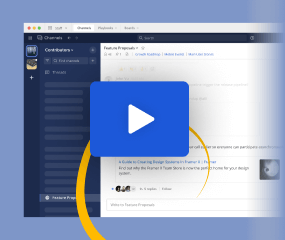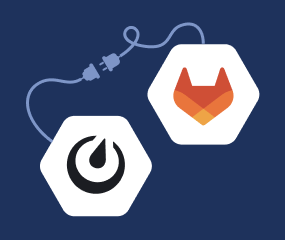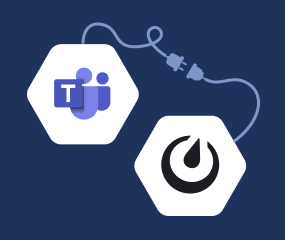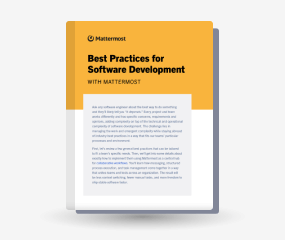Deploy Mattermost
Available on all plans
self-hosted deployments
Learn how to install, deploy, and scale Mattermost for teams and organizations of any size.
Deploy Mattermost on Ubuntu - Signed packages direct from Mattermost featuring a single command for install and upgrades.
Deploy Mattermost using Omnibus - An entire Mattermost installation on a single server
Install Mattermost Server using the tarball - Support for any Linux distribution
Tip
See the configuration settings documentation to learn more about customizing your production deployment.
Encountering issues with your deployment? See the Deployment Troubleshooting or high scale troubleshooting documentation for details.
You can install and deploy a production-ready Mattermost system on a Kubernetes cluster using the Mattermost Kubernetes Operator in practically any environment with less IT overhead and more automation.
You’ll need a Kubernetes cluster running version 1.16 or higher, Kubernetes CLI kubectl installed on local machine, and a basic understanding of Kubernetes concepts (such as deployments, pods) and actions (such as applying manifests, viewing pod logs). Running Mattermost in Kubernetes requires resources based on your total number of users. See the Mattermost Kubernetes Operator documentation to learn more about the minimum Kubernetes cluster resources Mattermost requires at different scales.
Tip
If you’re unsure about which environment you want to use for your Kubernetes cluster, we suggest using a managed service such as as Amazon EKS, Azure Kubernetes Service, Google Kubernetes Engine, or DigitalOcean Kubernetes.
Install the operators
Operators are installed using kubectl, and each operator is created in its own namespace. You can install and run multiple Mattermost installations in the same cluster using different namespaces.
Install NGINX ingress controller by following the instructions here.
Install the Mattermost Operator:
$ kubectl create ns mattermost-operator $ kubectl apply -n mattermost-operator -f https://raw.githubusercontent.com/mattermost/mattermost-operator/master/docs/mattermost-operator/mattermost-operator.yaml
Tip
To install the operators using the Mattermost Operator Helm chart, follow the instructions here.
Deploy Mattermost
(Mattermost Enterprise only) Create a Mattermost license secret by opening a text editor and creating a secret manifest containing the Mattermost license. Replace
[LICENSE_FILE_CONTENTS]below with the contents of your Mattermost license file. Save the file asmattermost-license-secret.yaml.
apiVersion: v1 kind: Secret metadata: name: mattermost-license type: Opaque stringData: license: [LICENSE_FILE_CONTENTS]
Create an installation manifest file locally in a text editor by copying and pasting contenst from the Mattermost installation manifest, and adjusting fields for your configuration and environment.
apiVersion: installation.mattermost.com/v1beta1 kind: Mattermost metadata: name: mm-example-full # Chose the desired name spec: size: 5000users # Adjust to your requirements ingress: enabled: true host: example.mattermost-example.com # Adjust to your domain annotations: kubernetes.io/ingress.class: nginx version: 6.0.1 licenseSecret: "" # If you have created secret in step 1, put its name hereSave the file as
mattermost-installation.yaml. While recommended file names are provided, your naming conventions may differ.Some of the most commonly-used fields include:
Field
Description
Must Edit
metadata.name
The name of your Mattermost as it will be shown in Kubernetes. The shorter the better.
Yes
spec.size
The size of your installation. This can be ‘100users’, ‘1000users, ‘5000users’, ‘10000users’, or ‘25000users’.
Yes
spec.ingress.host
The DNS for your Mattermost installation.
Yes
spec.version
The Mattermost version.
No
spec.licenseSecret
The name of the Kubernetes secret containing your license (e.g. mattermost-license). Required for Enterprise deployments.
No
spec.mattermostEnv
List of custom environment variables for the Mattermost instance.
No
Additional fields are documented in the example.
If you have previous experience with Kubernetes Custom Resources
you can also check the Custom Resource Definition.
Create external database secret. (Skip if using MySQL and MinIO operators).
The database secret needs to be created in the namespace that will hold the Mattermost installation. The secret should contain the following data:
Key
Description
Required
DB_CONNECTION_STRING
Connection string to the database.
Yes
MM_SQLSETTINGS_DATASOURCEREPLICAS
Connection string to read replicas of the database.
No
DB_CONNECTION_CHECK_URL
The URL used for checking that the database is accessible.
No
Example secret for AWS Aurora compatible with PostgreSQL:
apiVersion: v1 data: DB_CONNECTION_CHECK_URL: cG9zdGdyZXM6Ly91c2VyOnN1cGVyX3NlY3JldF9wYXNzd29yZEBteS1kYXRhYmFzZS5jbHVzdGVyLWFiY2QudXMtZWFzdC0xLnJkcy5hbWF6b25hd3MuY29tOjU0MzIvbWF0dGVybW9zdD9jb25uZWN0X3RpbWVvdXQ9MTAK DB_CONNECTION_STRING: cG9zdGdyZXM6Ly91c2VyOnN1cGVyX3NlY3JldF9wYXNzd29yZEBteS1kYXRhYmFzZS5jbHVzdGVyLWFiY2QudXMtZWFzdC0xLnJkcy5hbWF6b25hd3MuY29tOjU0MzIvbWF0dGVybW9zdD9jb25uZWN0X3RpbWVvdXQ9MTAK MM_SQLSETTINGS_DATASOURCEREPLICAS: cG9zdGdyZXM6Ly91c2VyOnN1cGVyX3NlY3JldF9wYXNzd29yZEBteS1kYXRhYmFzZS5jbHVzdGVyLXJvLWFiY2QudXMtZWFzdC0xLnJkcy5hbWF6b25hd3MuY29tOjU0MzIvbWF0dGVybW9zdD9jb25uZWN0X3RpbWVvdXQ9MTAK kind: Secret metadata: name: my-postgres-connection type: OpaqueNote
For PostgreSQL databases, the connection is checked with pg_isready so the
DB_CONNECTION_CHECK_URLis the same as connection string.For MySQL databases, the check is performed via HTTP call; therefore
DB_CONNECTION_CHECK_URLshould be an HTTP URL.
Create external filestore secret (Skip if using MySQL and MinIO operators).
The filestore secret needs to be created in the namespace that will hold the Mattermost installation. The secret should contain the following data:
Key
Description
Required
accesskey
Filestore access key.
Yes
secretkey
Filestore secret key.
Yes
Example secret for AWS S3:
apiVersion: v1 data: accesskey: QUNDRVNTX0tFWQo= secretkey: U1VQRVJfU0VDUkVUX0tFWQo= kind: Secret metadata: name: my-s3-iam-access-key type: Opaque
Adjust installation manifest (Skip if using MySQL and MinIO operators).
To instruct Mattermost Operator to use the external database, modify Mattermost manifest by adding the following fields:
spec: ... database: external: secret: my-postgres-connectionTo instruct Mattermost Operator to use the external filestore, modify Mattermost manifest by adding the following fields:
spec: ... fileStore: external: url: s3.amazonaws.com bucket: my-s3-bucket secret: my-s3-iam-access-keyAdditionally when using Amazon S3, set the
MM_FILESETTINGS_AMAZONS3SSEandMM_FILESETTINGS_AMAZONS3SSLenvironment variables totrue:spec: ... mattermostEnv: ... - name: MM_FILESETTINGS_AMAZONS3SSE value: "true" - name: MM_FILESETTINGS_AMAZONS3SSL value: "true"Example Mattermost manifest configured with both external databases and filestore:
apiVersion: installation.mattermost.com/v1beta1 kind: Mattermost metadata: name: mm-example-external-db spec: size: 5000users ingress: enabled: true host: example.mattermost-example.com annotations: kubernetes.io/ingress.class: nginx version: 6.0.1 licenseSecret: "" database: external: secret: my-postgres-connection fileStore: external: url: s3.amazonaws.com bucket: my-s3-bucket secret: my-s3-iam-access-key mattermostEnv: - name: MM_FILESETTINGS_AMAZONS3SSE value: "true" - name: MM_FILESETTINGS_AMAZONS3SSL value: "true"
Apply the installation manifest file. Manifests are applied with
kubectl. Before running the commands make sure you are connected to your Kubernetes cluster.
Create the Mattermost namespace:
$ kubectl create ns mattermost
(Mattermost Enterprise only) apply the license file by specifying the path to the file you created in step 1:
$ kubectl apply -n mattermost -f [PATH_TO_LICENCE_SECRET_MANIFEST]
Apply the installation file by specifying the path to the file you created in step 2:
$ kubectl apply -n mattermost -f [PATH_TO_MATTERMOST_MANIFEST]The deployment process can be monitored in the Kubernetes user interface or in command line by running:
$ kubectl -n mattermost get mm -wThe installation should be deployed successfully, when the Custom Resource reaches the
stablestate.
Configure DNS and use Mattermost.
When the deployment is complete, obtain the hostname or IP address of your Mattermost deployment using the following command:
$ kubectl -n mattermost get ingressCopy the resulting hostname or IP address from the
ADDRESScolumn, open your browser, and connect to Mattermost.Use your domain registration service to create a canonical name or IP address record for the
ingress.hostin your manifest, pointing to the address you just copied. For example, on AWS you would do this within a hosted zone in Route53.Navigate to the
ingress.hostURL in your browser and use Mattermost.If you just want to try it out on your local machine without configuring the domain, run:
$ kubectl -n mattermost port-forward svc/[YOUR_MATTERMOST_NAME] 8065:8065Then navigate to http://localhost:8065.
You’ll need Docker Engine and Docker Compose (release 1.28 or later) Follow the steps in the Mattermost Docker Setup README or follow the steps below.
Encountering issues with your Docker deployment? See the Docker deployment troubleshooting documentation for details.
In a terminal window, clone the repository and enter the directory.
git clone https://github.com/mattermost/docker cd dockerCreate your
.envfile by copying and adjusting theenv.examplefile.cp env.example .env
Important
At a minimum, you must edit the DOMAIN value in the .env file to correspond to the domain for your Mattermost server.
Create the required directories and set their permissions.
mkdir -p ./volumes/app/mattermost/{config,data,logs,plugins,client/plugins,bleve-indexes} sudo chown -R 2000:2000 ./volumes/app/mattermost
Configure TLS for NGINX (optional). If you’re not using the included NGINX reverse proxy, you can skip this step.
If creating a new certificate and key:
bash scripts/issue-certificate.sh -d <YOUR_MM_DOMAIN> -o ${PWD}/certs
To include the certificate and key, uncomment the following lines in your
.envfile and ensure they point to the appropriate files.#CERT_PATH=./certs/etc/letsencrypt/live/${DOMAIN}/fullchain.pem #KEY_PATH=./certs/etc/letsencrypt/live/${DOMAIN}/privkey.pem
If using a pre-existing certificate and key:
mkdir -p ./volumes/web/cert cp <PATH-TO-PRE-EXISTING-CERT>.pem ./volumes/web/cert/cert.pem cp <PATH-TO-PRE-EXISTING-KEY>.pem ./volumes/web/cert/key-no-password.pem
To include the certificate and key, ensure the following lines in your
.envfile points to the appropriate files.CERT_PATH=./volumes/web/cert/cert.pem KEY_PATH=./volumes/web/cert/key-no-password.pem
Configure SSO with GitLab (optional). If you want to use SSO with GitLab, and you’re using a self-signed certificate, you have to add the PKI chain for your authority. This is required to avoid the
Token request failed: certificate signed by unknown authorityerror.To add the PKI chain, uncomment this line in your
.envfile, and ensure it points to yourpki_chain.pemfile:#GITLAB_PKI_CHAIN_PATH=<path_to_your_gitlab_pki>/pki_chain.pemThen uncomment this line in your
docker-compose.ymlfile, and ensure it points to the samepki_chain.pemfile:# - ${GITLAB_PKI_CHAIN_PATH}:/etc/ssl/certs/pki_chain.pem:roDeploy Mattermost.
Without using the included NGINX:
sudo docker-compose -f docker-compose.yml -f docker-compose.without-nginx.yml up -d
To access your new Mattermost deployment, navigate to
http://<YOUR_MM_DOMAIN>:8065/in your browser.To shut down your deployment:
sudo docker-compose -f docker-compose.yml -f docker-compose.without-nginx.yml down
Using the included NGINX:
sudo docker-compose -f docker-compose.yml -f docker-compose.nginx.yml up -d
To access your new Mattermost deployment via HTTPS, navigate to
https://<YOUR_MM_DOMAIN>/in your browser.To shut down your deployment:
sudo docker-compose -f docker-compose.yml -f docker-compose.nginx.yml down
Create your first Mattermost System Admin user, invite more users, and explore the Mattermost platform.
Prepare for your Mattermost deployment
These guides will help you prepare for your Mattermost deployment.
Preview Mattermost via Docker - Preview Mattermost instantly or deploy via Docker for production use.
Administrator tasks - Learn about the standard configurations and settings you’ll encounter.
Architecture - Learn the basics of user authentication, notifications, data management services, network connectivity, and high availability.
Implement Mattermost - Get a detailed breakdown of the technical requirements to deploy Mattermost for your team or organization.
Enterprise roll out checklist - Learn how to roll Mattermost out to thousands of users.
Welcome email template - Use our sample email template when you’re ready to invite users to your server.
Install guides
The Mattermost server and client apps can run on all of the most popular platforms. Here’s a list of the most popular installation methods.
Deployment guide
The deployment guide is for administrators who are ready to integrate Mattermost with their organization’s IT infrastructure.
Server deployment
Deployment overview - Learn the basics of the Mattermost user experience, communication protocols, network access, data storage, and deployment options.
Set up a socket-based Mattermost database - Connect your Mattermost server to your database service.
Image proxy - Setup and configure an image proxy to make loading images faster and more reliable and prevent pixel tracking.
Backup and disaster recovery - Implement data backups, disaster recovery, and high availability deployment.
Encryption options - Setup encryption for data in transit and at rest.
Configure transport encryption - Use transport encryption between Mattermost clusters and your proxy and database.
Bleve search - Use the Bleve search engine to provide Lucene-style full-text search.
Desktop and Mobile App deployment
Customize the Mattermost desktop and mobile apps to meet any deployment needs.
Desktop Apps
Desktop app deployment guide - Customize and distribute the Mattermost desktop app with pre-configured settings.
Desktop MSI installer and group policy installation guides (beta) - Use the Mattermost MSI installer and Group Policy definitions for Windows deployment.
Desktop app custom dictionaries - Create custom dictionaries for Mattermost spellcheck.
Desktop managed resources - Configure resource management for services running on the same domain as your Mattermost instance.
Mobile Apps
Using Mattermost’s pre-built mobile apps - Connect users to your Mattermost server with our prebuilt apps for Android and iOS.
Deploy Mattermost mobile apps - Learn the basics of how to customize and deploy Mattermost to the Enterprise.
Mobile push notifications - Set up mobile push notifications.
Building and distributing your own custom Mattermost mobile apps - Build custom mobile Mattermost apps.
Deploying mobile apps using an EMM provider - Deploy with Enterprise Mobile Management software to enforce security policies and enforce specific versions of the Mattermost mobile apps.
AppConfig for EMM solutions with Mattermost mobile apps - Learn how AppConfig provides an easy way to configure enterprise mobile applications.
Mobile VPN options - Learn how to use the Mattermost mobile apps with Mobile VPNs.
Upgrade Mattermost
Stay up to date with the latest features and improvements.
Prepare to upgrade Mattermost - Learn how to prepare for a Mattermost upgrade.
Upgrade Mattermost Server - Learn the basics of upgrading your Mattermost server to the latest version.
Enterprise install and upgrade - Learn how to upgrade your Mattermost server to premium versions.
Install a license key - Learn how to add or change a Mattermost license key.
Release definitions - Get details on the Mattermost release schedule and the types of releases.
Important upgrade notes - Find version-specific upgrade considerations.
Release lifecycle - See critical release lifecycle dates.
Extended Support Release - Get information about releases that have extended release support.
Downgrade Mattermost Server - Find out how to roll back to older versions of Mattermost.
Version archive - Download binaries for every release.
Scale Mattermost
Scale and monitor your Mattermost deployment.
Scale for Enterprise - Scale Mattermost to tens of thousands of users and beyond.
High availability cluster - Maintain Mattermost service during outages and hardware failures with redundant infrastructure.
Elasticsearch - Enhance search performance with Elasticsearch.
Performance monitoring - Use Prometheus and Grafana to monitor the health and performance of your Mattermost cluster.
Mattermost performance alerting guide - Learn strategies and best practices for monitoring your Mattermost cluster.




































